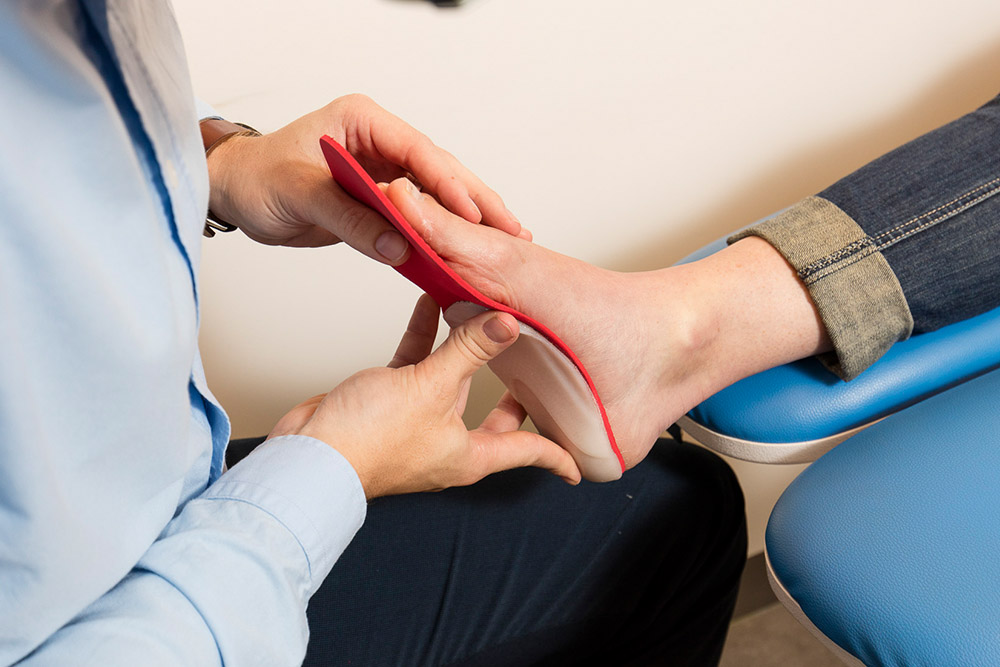What are Foot Orthotics?

What are Foot Orthotics?
Redefining the Chairside Orthotic
Foot Orthotics have been used for the management of lower-limb and foot pathologies since the 19th century. Clinical studies have shown that Orthotic devices encourage the normal function of the foot by dissipating kinetic forces during the stance phase of gait, incorporating elevated contact surfaces to correct poor biomechanics of the lower-limb, redistributing loads to adjacent foot structures through accommodative moulding and reducing plantar pressures in focal areas which is particularly important in diabetic patients.
Foot Orthotic Types
The most commonly used types of foot Orthotics in clinical settings are: simple Insoles, custom-made and prefabricated or semi-bespoke Orthotics.
Simple Insoles are manufactured using a multi-layered approach, starting with a base, mid layer components and covering materials mainly using open and closed cell polyurethanes as well as leathers and viscoelastic polymers which provide local cushioning and minimal mechanical correction.
Custom-made foot Orthotics are devices manufactured from a foot impression either utilising traditional plaster of Paris casts or different scanning techniques. Devices are traditionally manufactured using more rigid materials such as Polypropylene or various densities of Ethylene Vinyl Acetate (EVA) which provide pressure relief as well as more mechanical correction.
Although in principle more accurate than off the shelf devices, their accuracy will depend greatly on several factors which are independent of the prescribing clinician - not to mention the manufacturing time and potential inaccuracies with the finished device as well as the cost implications associated with their production making this not the most practical or cost effective choice of Orthotic manufacture.
Prefabricated or Semi-bespoke Orthotics are non-custom devices designed to provide a neutral base offering a standard degree of support, although they are not significantly corrective on their own. In conjunction with Slimflex components they can offer a similar degree of correction as custom made devices.
Prefabricated Finshed Devices such as Interpod includes intrinsic posting based on biomechanical, laboratory and clinical experience for an immediate, non-invasive, research-supported treatment.
Orthotic Insoles provide moderate support and foot cradling to help prevent pronation and supination while providing comfort. Many of the inserts listed can be modified by clinicians providing additional functional control.
When Custom Devices are Required?
An orthotic corrective device worn that can help the muscles, tendons and bones function at their highest potential. Custom-made orthotics are manufactured from a 3D image of your body part using casting materials or 3D scanning devices. When appropriately prescribed to treat a medical condition and custom-made, orthotics can decrease pain in parts of the body, such as your knees, hips and lower back.
As a patient what to expect during your assessment
Once you have a prescription for custom- made orthotics, your next step is an appointment with a qualified foot care specialist. Your provider guides you through an extensive evaluation to ensure orthotic(s) are the best option and that they’re properly designed for you.
During your examination, your provider observes:
- Your overall posture
- The structure, alignment, strength and range of motion of your legs, hips and feet
- Your presenting symptoms and condition
During your gait analysis, your provider observes how you walk; identifying any existing accommodations or abnormalities.
Based on your assessment, your provider discusses your treatment options and explains how the treatment will help meet your specific needs.


